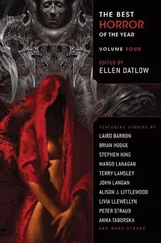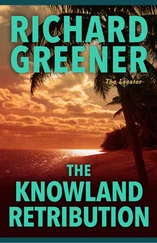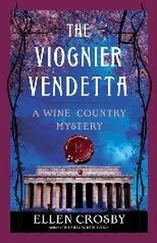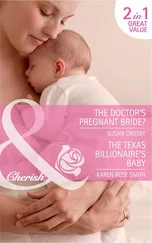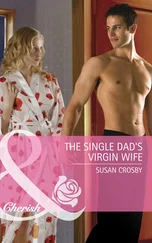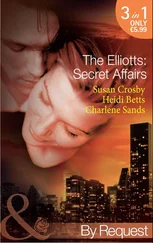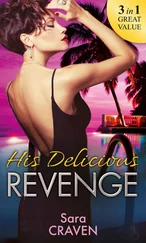The police found my car in Pennsylvania two days later. Chance and his girlfriend had vanished, but by now Bobby had told me that Chancellor Miller was one of many names he’d gone by over the past five years. The FBI was brought in because of the stolen credit cards and I cooperated fully, turning over as much information as I could provide so they could contact anyone whose credit cards might have been compromised.
Benny finally tracked down a couple of the laborers who had picked our Riesling, confirming what Chance had admitted about skimming their pay.
“We’re going to have a hell of a lot of fence mending to do to clean up our reputation,” Quinn said.
“I know,” I told him. “But we’ll clean it up. Speaking of which, Seth Hannah called. The Romeos would like to reschedule that barrel tasting.”
Quinn nodded. “I think that can be arranged.”
Within the week Tyler was cleared in the shooting of Ray Vitale once it was established that he’d been shot with a .44-caliber ball which couldn’t have come from Tyler’s Enfield rifle.
Annabel and Sumner returned to Charlottesville. I had no idea if they bought Mick’s horse, though sooner or later word would get around to the Romeos or Thelma and I’d find out one day at the General Store.
I told Bobby what I suspected about Sumner paying Chance to shoot Ray. He shook his head and told me so far they had turned up nothing to connect them.
“But don’t worry,” he said. “We’re looking. And when we get Miller, I’m sure he’ll roll on Chastain.”
We talked about it one evening when he and Kit came by the vineyard after work for a drink with Quinn and me.
We were sitting on the terrace, watching another spectacular sunset behind the Blue Ridge. Quinn looked weary after working flat out to salvage the Riesling, even though we’d never figured out what, if anything, Chance had done to sabotage it.
We were back on the subject of Chance, Sumner, and Ray Vitale.
“Chance, or whoever he is, had enough motive on his own to shoot Ray Vitale,” Bobby said. “He worked for Vitale a few years back. He’s the one who wrecked Vitale’s credit and ran up tens of thousands of dollars of bills.”
“Ray was going to sue Sumner,” I said. “B.J. and I were there when they argued in my parking lot.”
“We’ve been all over that,” Bobby said. “It’s a leap to say Chastain ordered a hit on Vitale and hired Chance to carry it out.”
“I think it’s the other way around. Chance went to Sumner with a proposition,” I said.
“You know, I understand how Chance swiped my card,” Kit said. “But who made those charges at Neiman Marcus with Frankie’s card?”
“I think I figured that out,” I said. “The day Brandi came by to see Eli, she threw her purse down on the bar stool. I found the store catalog on the floor after she left and stuck it behind the bar. When Chance helped out pouring wine, he probably took it. Lucky for him it had her address on it, too. Made it easier to cast suspicion on Eli or Brandi.”
Kit shook her head. “Go figure. What about Sumner killing Beau?” she asked.
“Sumner never admitted it,” I said. “But I know he did it to protect Annabel.”
Bobby finished his wine and covered Kit’s hand with his.
“It’s an imperfect world,” he said. “We do the best we can and we go on to fight another day. I’ve learned to live with that or I’d go crazy.”
After they left, Quinn and I stayed on the terrace until it grew dark.
“Got any interest in seeing the Pleiades tonight?” he asked.
“I might.”
He looked sideways at me. “You don’t sound too excited.”
“Throw in dinner and I might be excited.”
“What about dessert?” He raised an eyebrow.
“Dessert would be nice, too.”
“You’re easy,” he said. “A real pushover.”
“Not as much of a pushover as you think. I’m going home to shower and change. Pick me up in an hour? I’m sure Dominique will give us a good table at the Inn.”
“What are you talking about? You mean dinner, like dinner?” He looked wounded.
I smiled. “And dessert, like dessert.”
“What about the Pleiades?”
“One thing at a time,” I said.
The Battle Of Ball’s Bluff
Ball’s Bluff Battlefield Regional Park is located at the end of a street in a quiet subdivision near a sprawling outlet shopping mall a few miles from Leesburg, Virginia. But once inside the 223-acre park, the noise and bustle of the twenty-first century recede, and a visitor, out to exercise the dog or take a walk with friends or family, is soon enveloped in silence in the sun-dappled woods. Well-marked paths, Civil War monuments, and the third smallest military cemetery in the United States, where the remains of fifty-four Union soldiers lie in twenty-five graves, make it impossible to forget that a bloody battle occurred here—and some will swear that the park is haunted.
The Battle of Ball’s Bluff took place on October 21, 1861, three months after the Union army lost the First Battle of Bull Run, the first great land battle of the Civil War. Ball’s Bluff was, plain and simply, an accident that evolved as a result of a mistake by an inexperienced Union officer. In a few years’ time, it would be considered of relatively minor importance when compared to other battles such as Gettysburg, Antietam, or Chancellorsville, but its significance on the remainder of the Civil War is indisputable: Congress, eager for a scapegoat after the death of one of their own, Senator Edward Baker, a Union commander responsible for much of the bungling, decided to form the Joint Committee on the Conduct of the War. Shocked by Baker’s death and the sight of so many bodies in blue floating down the Potomac River past Washington, the committee oversaw the strategy and battle plans of Union commanders, who chafed under this authority for the remainder of the war.
James A. Morgan III, author of A Little Short of Boats: The Fights at Ball’s Bluff and Edwards Ferry (Ironclad Publishing, 2004), describes the bluffs as a six-hundred-yard-long stretch of heavily wooded shale and sandstone cliff on the Virginia side of the Potomac River. A floodplain lies between the water and the cliffs, which rise about 110 feet above the river. Harrison Island, a long, narrow island that bisects the Potomac at the bluffs, played a significant role in the battle as the place from which Union soldiers launched their boats. The geography of Ball’s Bluff then, as now, is unforgiving.
In the fall of 1861, under orders of Major General George McClellan, Union troops were keeping an eye on the area around Leesburg. Because all Potomac bridges between Harpers Ferry and above the Chain Bridge near Washington, D.C., had been burned, the ferry crossings above and below Leesburg were of strategic importance to both armies. Whoever controlled the area controlled invasion routes leading north and south.
For several weeks in October, Confederate commander Nathan “Shanks” Evans watched uneasily as a growing number of Union troops amassed in the area. Worried that he might be cut off without nearby reinforcements, Evans withdrew from Leesburg on October 16 without getting permission from his commanding officers.
Union troops monitoring Evans’s departure assumed Leesburg had been left unprotected. What they did not know was that Evans’s commander, General P.G.T. Beauregard, had ordered him to return to the town, which he did on October 19. The following day, Union soldiers, under orders of Brigadier General Charles P. Stone, staged a small show of force to see what, if anything, the Confederates would do. That night a small Union patrol crossed the Potomac River to investigate the impact their demonstration had had on the Confederates. Unfortunately, in the moonlight their inexperienced leader mistook a row of trees for an enemy camp and reported this to Stone, who ordered a raid the next day.
Читать дальше

